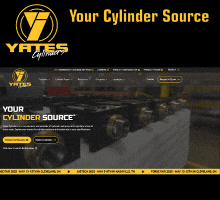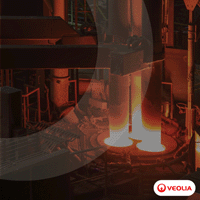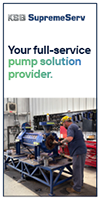Ruukki Discusses Energy Efficiency as a Business Opportunity in the Steel Industry
08/17/2012 - Companies worldwide increasingly realize and acknowledge that sustainability is not merely a necessary means for maintaining and enhancing their reputation and corporate culture, but also presents numerous opportunities for driving business. In the steel industry, it poses a business opportunity for the manufacturer, but also for the customer and end-user.
Sustainability is an umbrella that covers a broad range of responsibilities, spanning environmental, economic, social and product dimensions. Contrary to appearances, companies worldwide increasingly realize and acknowledge that sustainability is not merely a necessary means for maintaining and enhancing their reputation and corporate culture, but also presents numerous opportunities for driving business. In the steel industry, it poses a business opportunity for the manufacturer, but also for the customer and end-user.
The vast array of sustainability topics offers a multitude of business options. Each company identifies the most relevant and best opportunity for their business to build competitive advantages. Ruukki has identified energy efficiency as its opportunity to turn sustainability into business options.
"Our customers may ask why they should invest in energy-efficient technology and pay more for it. Our response is to ask why we should waste energy instead of saving money and resources or use thick materials instead of utilising high-strength material and make it lighter. We see energy efficiency as a business opportunity for us and our customers," says Harri Leppänen, who is responsible for environment, quality and safety at Ruukki Metals.
Ruukki believes that improving energy efficiency is one of the most cost-effective ways of cutting the increasing trend in energy demand as well as CO2 emissions.
"We focus on energy-efficient solutions that create cost benefits for the customer and are sustainable from an environmental point of view. Our focus in this respect is currently on the construction business, optimising energy-efficiency in the construction and maintenance of buildings as well as the use of special steels for lighter and more durable products," says Petteri Lautso, Sustainability Director at Ruukki Construction.
By pursuing energy efficiency as a business case under the umbrella of the manifold sustainability aspects, Ruukki rose, in 2011, to the position of industry leader in the Dow Jones Sustainability Index World, heading the world’s eight best steel companies in the listing that reflects the company’s excellence across the entire field of sustainability topics.
Why is now the time for energy-efficient actions?
Global energy prices are rising in reaction to a variety of factors, including limited resources, unceasing population growth, rising energy demands and energy regulation, such as the EU’s 20/20/20 climate and energy goals.
The EU’s climate and energy regulations present a challenge to industry across Europe, since the regional approach of these regulations turns the global market into an uneven playing field. On the other hand, the expected population growth from the current figure of seven billion to nine billion by 2050, the significant increase in worldwide energy demand because of rising living standards and the regulation of energy consumption of end-user products will create opportunities for the steel industry.
"We see it in a simple way: Every choice is a chance to do things better and go further. The choice for us and our customers is energy-efficient steel solutions for better living, working and moving," Harri Leppänen says.
CASE 1: Energy-efficient solutions for construction
Rising energy costs in real estate create strong demand for solutions improving building energy efficiency. Ruukki has developed cost-efficient ways to save energy in buildings: energy panels, integrated solar panel façades and energy piles. We innovate solutions that not only reduce energy consumption, and thereby cut costs and CO2 emissions, but also increase property values and improve the working environment.
• Ruukki energy panels, for instance, enable an airtight façade structure and allow our customers to save up to 30% in heating costs compared to conventional structures.
• Construction customers further benefit from our energy pile solutions, which combine building foundations with ground-source heat, utilizing renewable local energy to meet up to approximately 70% of building’s heating need and all of its required cooling.
• Ruukki has also developed a photovoltaic system that is fully integrated into a panel façade and converts sunrays into electricity, even in overcast conditions.
CASE 2: Customers benefit from increasingly lighter, more durable products
Transportation is the fastest growing sector in terms of energy consumption in the EU. It presently accounts for about 20 percent of the EU’s total energy consumption and fuel costs generally constitute the most significant cost factor for operators of moving vehicles or machines. Utilization of high-strength Optim and wear-resistant Raex steels can save energy in moving vehicles. Longer lifetime and reduced maintenance work provide efficiency in material usage. High-strength and wear-resistant steels enable lighter structures, higher payloads and thus reduce fuel consumption and carbon emissions, while additionally prolonging the lifespan of the mobile machines.
• The use of high-strength Ruukki Optim steel can reduce the thickness of steel and the weight of the tipper bodies by 20%. In addition to fuel savings for the vehicle, end-users can benefit by higher payloads on each trip.
• For example use of Ruukki Optim high-strength steel can reduce material thickness and the weight of the boom and other crane parts by 20%. In addition a lower unladen weight reduces maintenance and fuel costs. In an example case the fuel costs were reduced by 1.2% (some €2,800) over the lifecycle of a crane.
• Wear-resistant Ruukki Raex steel prevents the wear and damage of structural parts and decreases repair costs for road building and mining machinery. The lifetime of a bucket made of Ruukki Raex can be 2.5 times greater than that of structural steels.



.png?lang=en-US&ext=.png)




